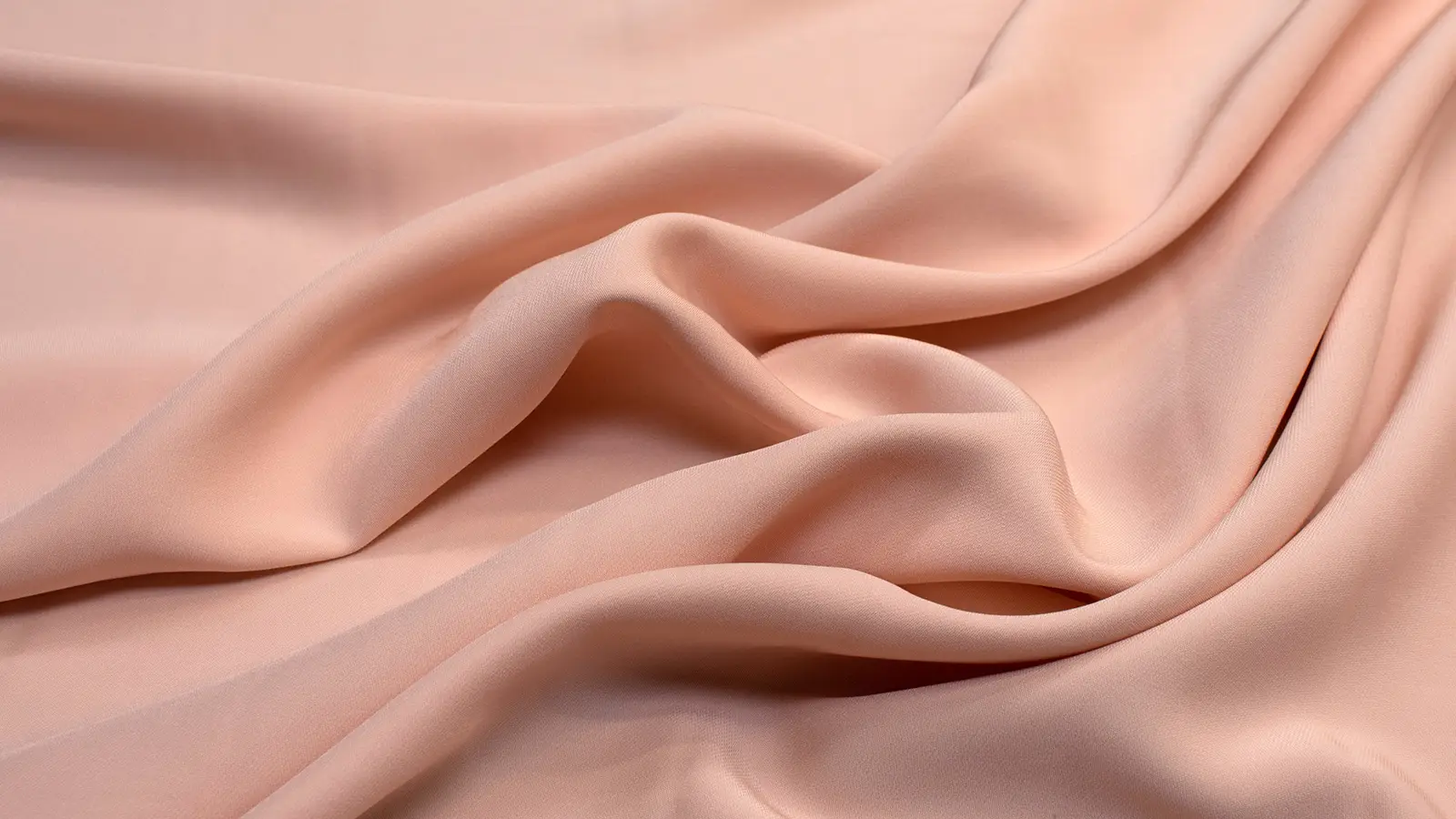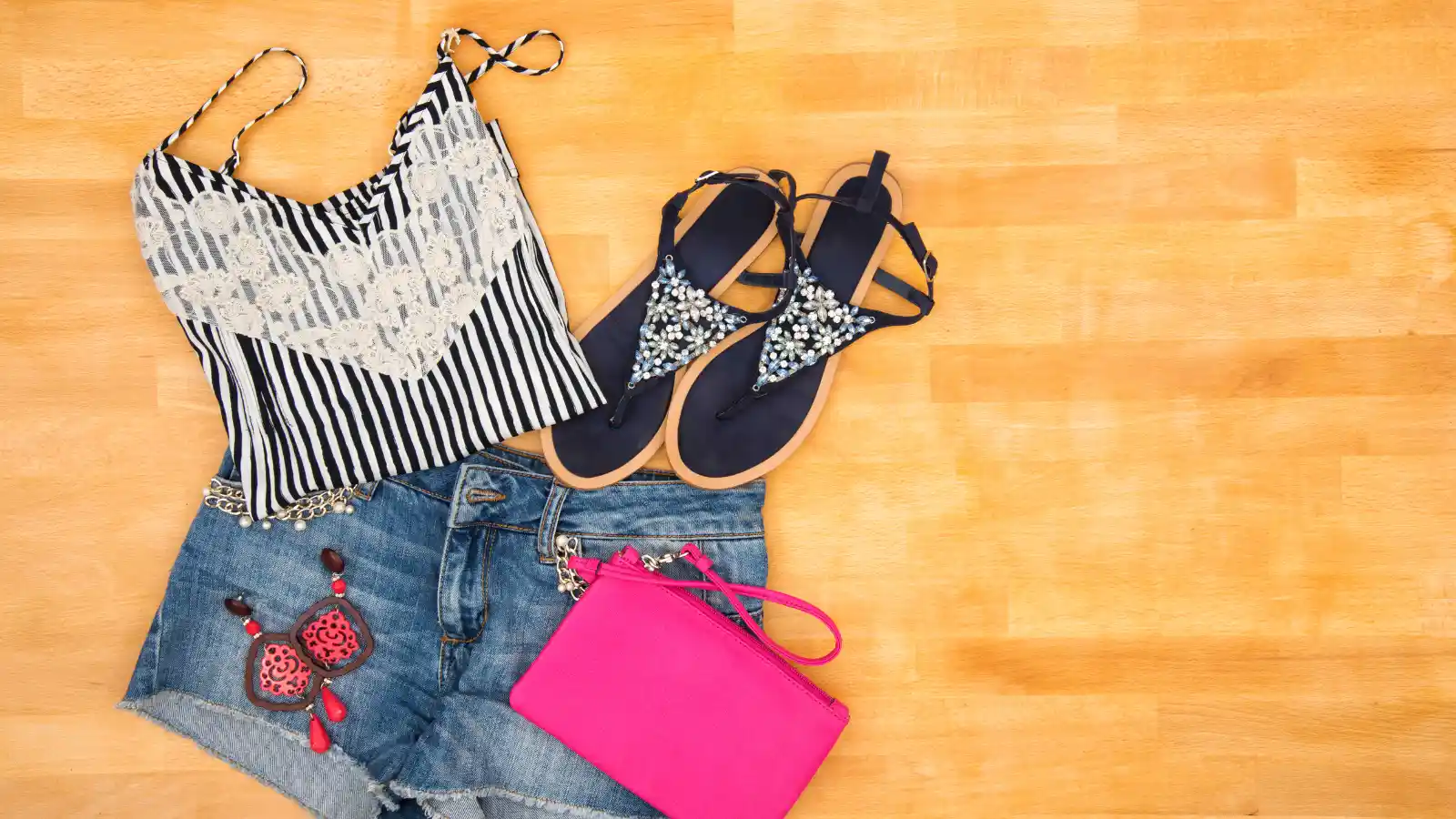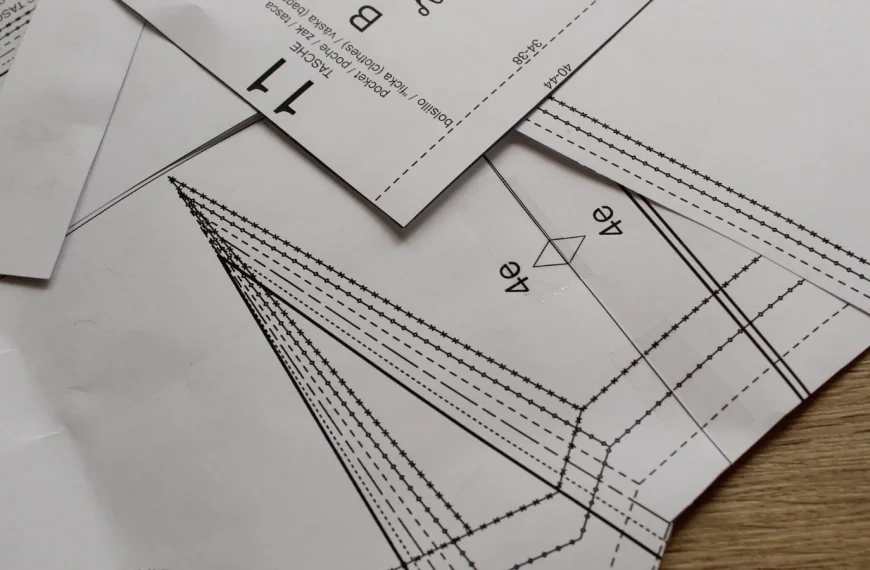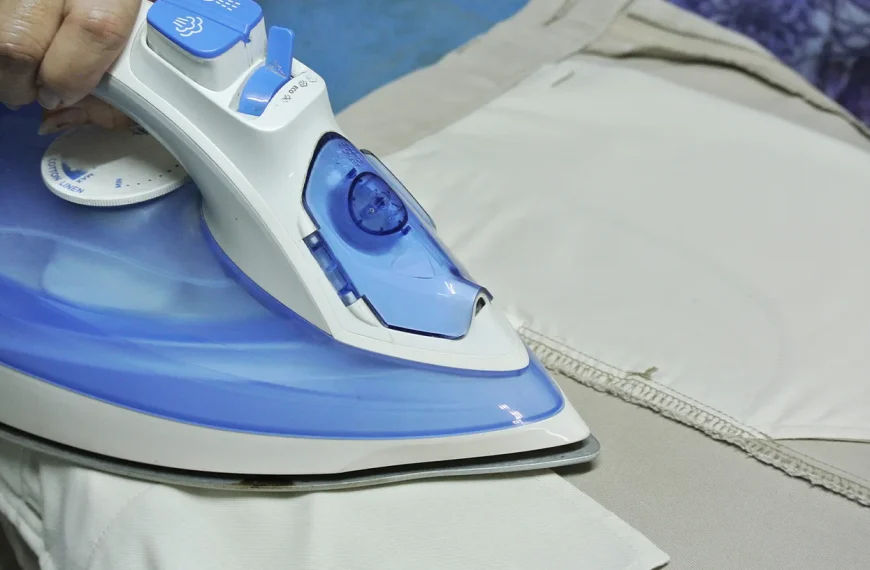Do you find it frustrating to work with fabric that easily stretches or distorts? It’s time to take control of your sewing projects by understanding the difference between cross grain and straight grain. By mastering these fundamental concepts, you can create durable, well-structured, and visually appealing garments.
Say goodbye to uneven finishes and wonky seams and welcome professional-looking garments that will stand the test of time. This essential guide to cross grain vs straight grain will help you elevate your sewing skills and unlock the full potential of your fabrics.
Key Takeaways
- Straight grain aligns with warp threads. It provides structure and stability, which is ideal for tailored or structured garments.
- Cross grain runs perpendicular to warp threads. It offers more elasticity and flexibility, making it suitable for clothing with dynamic drapes and flow.
- Garments cut on the straight grain resist stretching and maintain shape better, enhancing durability and fit.
- Cross grain cutting increases fabric drape and fluidity. It adds visual interest and enhances the aesthetic.
- Choosing between straight and cross grain depends on the finished garment’s desired functionality, fit, and appearance.
What is Straight Grain?
 Straight grain runs parallel to the fabric’s selvage. It provides essential stability and structure to garments. Aligning your sewing pattern pieces with the straight grain leverages this inherent stability to your advantage. This strategic placement ensures consistent fabric behavior during sewing and over time.
Straight grain runs parallel to the fabric’s selvage. It provides essential stability and structure to garments. Aligning your sewing pattern pieces with the straight grain leverages this inherent stability to your advantage. This strategic placement ensures consistent fabric behavior during sewing and over time.
The straight grain is your goto for ensuring that garments resist distortion and stretching. It’s particularly essential for pieces requiring a clean, uninterrupted flow.
What is Cross Grain?
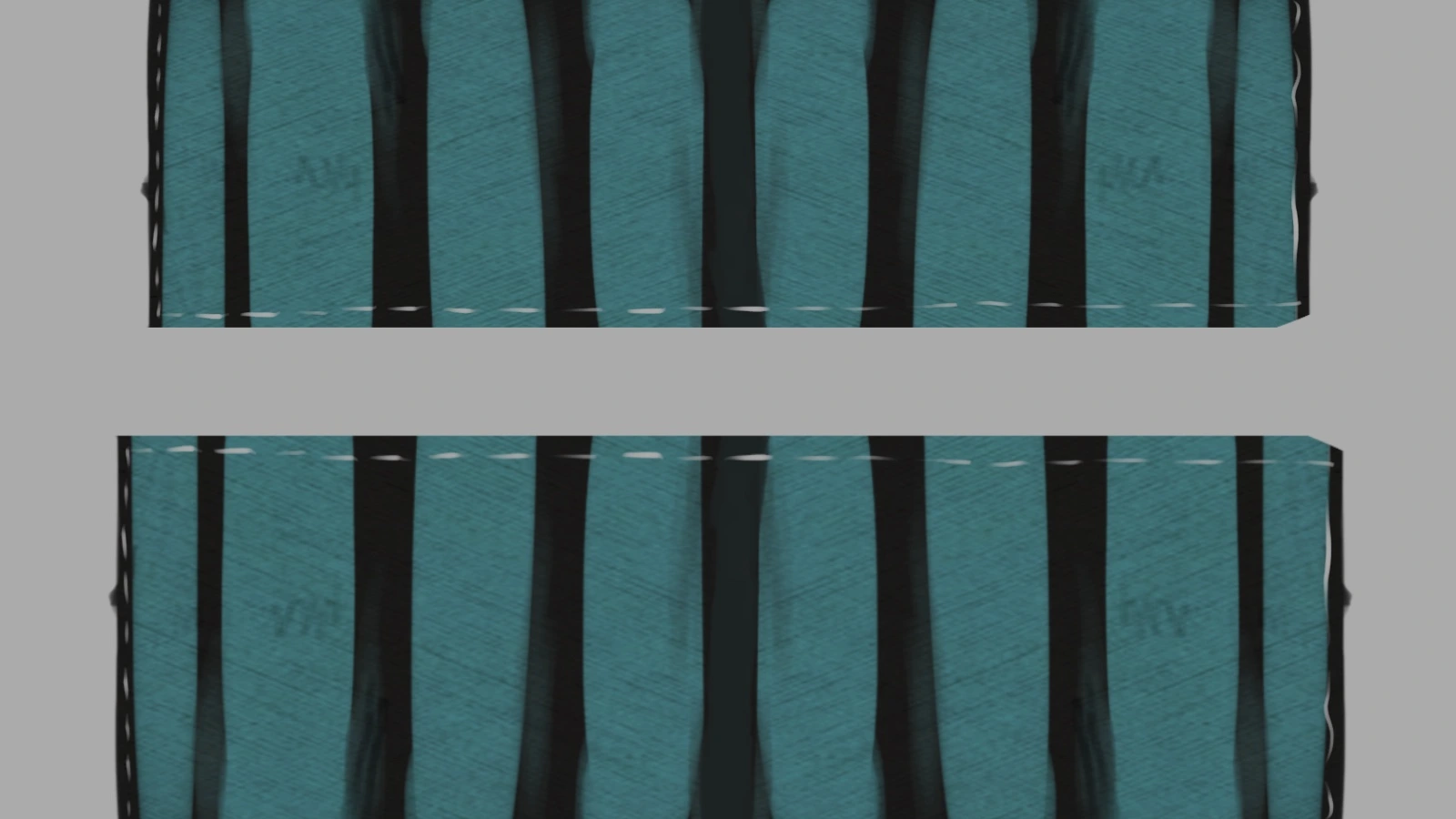 The cross grain runs perpendicular to the selvage. It introduces more flexibility and stretch to fabric projects.
The cross grain runs perpendicular to the selvage. It introduces more flexibility and stretch to fabric projects.
Using the cross grain allows for more give. It’s beneficial when working with patterns or borders that benefit from increased elasticity.
However, managing this stretch is essential to maintain the garment’s shape and fit. When creating directional prints or requiring a distinct drape, strategically employing the cross grain’s characteristics enhances both the functionality and aesthetic appeal of your fabric creations.
Cross Grain Vs Straight Grain
Now, let’s explore the differences between cross and straight grain in three aspects.
Directional Differences and Their Implications
Aligning fabric on the straight grain, which runs parallel to the selvage, ensures stability and guarantees minimal stretching and distortion. This is important for structured garments to maintain a precise shape.
In contrast, the cross grain runs perpendicular to the selvage and offers more give. It enhances the drape and allows for dynamic movement in the finished piece. This flexibility is particularly advantageous when emphasizing border prints or maximizing fabric yardage.
Understanding these key differences due to grain alignment is vital for achieving your desired fit and aesthetic in sewing projects.
Comparison of Durability and Stability
It’s important to note that straight grain cuts provide superior stability and durability. This makes them ideal for garments requiring a defined shape.
- Stability: Straight grain aligns with the warp threads. It enhances the fabric’s resistance to distortion.
- Durability: Garments cut on the straight grain resist wear and tear better, maintaining their original form.
- Thread Alignment: Straight grain cutting ensures threads run parallel and evenly. It reduces the likelihood of stretching and skewing.
- Shape Retention: Due to its alignment with the warp threads, straight-grain fabric better retains its shape, which is especially important in structured designs.
Consider these factors when deciding between straight or cross grain to guarantee your project’s success.
Aesthetics and Final Appearance in Finished Products
Cutting along the straight grain of the fabric will result in a more stable and structured appearance in the finished garment. On the other hand, cutting along the cross grain will offer more fluidity and drape, making it ideal for flowing designs.
In contrast, cutting across the bias grain adds visual interest and a modern twist to your garments. This method disrupts the typical flow of the weave, creating unique and dynamic patterns.
Factors to Consider When Choosing Grain Orientation
Choose the appropriate grain orientation for your project based on the type of garment or item you’re creating. Consider the fabric’s stretch and pattern. They can affect the final appearance and functionality of your piece.
Type of Garment or Project
Selecting the suitable grain orientation relies heavily on the type of garment or project you’re working on. Because various grains influence the fabric’s behavior and the final appearance of the piece. Here’s how to decide:
- Straight Grain: Opt for this when making structured garments like tailored jackets or pencil skirts. It guarantees stability and minimal stretch, maintaining the integrity of the silhouette.
- Cross Grain: Ideal for flowy dresses or wide-leg pants. It enhances the drape and adds visual interest through pattern orientation.
Desired Fit and Comfort
Opt for straight grain when your design demands structured support. This orientation enhances stability, making it ideal for tailored garments that benefit from a rigid silhouette.
Conversely, choosing cross grain is advisable if you aim for a garment with more drape and movement. This approach allows the fabric to behave more fluidly. It provides a looser fit that enhances comfort, especially in flowing designs.
Understanding these distinctions ensures that your selection aligns with your garment’s functional requirements and aesthetic goals, optimizing both fit and comfort.
Fabric Type and Pattern
You must evaluate both the fabric type and pattern design to determine the most suitable grain orientation.
Here are some important factors to take into account:
- Fabric Behavior: Stretch fabrics often perform differently on the cross grain, impacting fit and comfort.
- Visual Appeal: Patterns like stripes or plaids might align better or create more dynamic effects on the cross grain.
- Garment Stability: Straight grain usually offers more stability, which is essential for structured designs.
- Drape and Flow: The drape of a fabric can be enhanced or hindered by the direction of the grain, affecting the final silhouette.
Choose wisely to guarantee the integrity and appearance of your finished piece.
Conclusion
When selecting fabric grain, remember that choosing between straight and cross grain impacts your project’s final appearance and functionality.
Use straight grain for garments requiring stability and shape, like tailored suits. Opt for cross grain for garments that need added drape and fluidity, such as flowy dresses.
Always consider the garment’s purpose and the fabric’s behavior as you decide. Following these guidelines guarantees you’ll achieve the best results in your sewing endeavors.
Learn more about sewing tips at Longan Craft Blog, and dive into the fabric world with Longancraft!
FAQs
What is the difference between straight grain and cross grain fabric?
Straight grain runs parallel to the selvedge, offering stability. Cross grain, however, runs perpendicular and has more stretch, affecting the drape and fit of your projects.
What does cross grain do?
Cutting fabric on the cross grain affects stretch and drape, allowing for creative pattern display. However, you’ll need to manage its stretchiness to maintain the garment’s shape and fit throughout its length.
What happens if you cut fabric on the cross grain?
Cutting the fabric on the cross grain may stretch and affect the garment’s fit and appearance. It’s important to manage these changes.
How do I identify cross grain?
You’ll stretch the fabric across its width to identify the cross grain. It’ll give slightly more than along its length. Check by pulling gently; the direction with more stretch is the cross grain.


